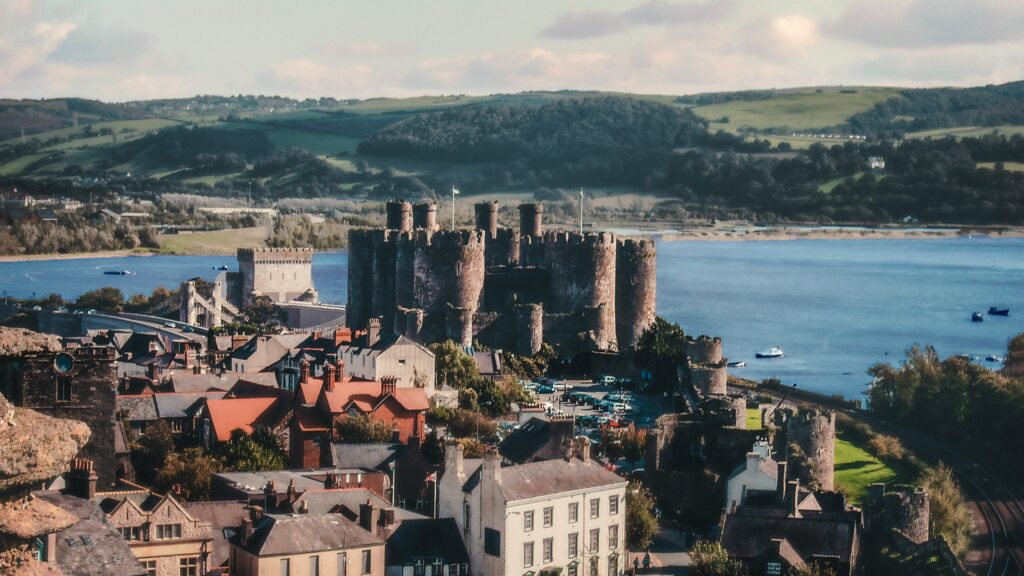Tehmina Goskar looks back at a day celebrating the heritage of Swansea’s Copperopolis
2010 is a landmark year in the history of industrialisation and regeneration in Swansea. It marks the 200th anniversary of the founding of the internationally significant Hafod copperworks. It also marks the 50th anniversary of the establishment of the Lower Swansea Valley Project that promoted the dramatic transformation of the largest derelict industrial landscape in Europe, the first ever reclamation project of its kind. And only five years ago, saw the opening of the National Waterfront Museum.
These anniversaries were celebrated last month at a conference organised by the IWA’s Swansea Branch, Swansea University and the city’s National Waterfront Museum on the theme History, Heritage and Urban Regeneration. The conference also saw the launch of a new project on the ‘Global and Local Worlds of Welsh Copper’ to promote the lower Swansea valley, once the world centre for mining, smelting and refining but today in a ruinous state. Based at Swansea University and funded by the Economic and Social Research Council, the project is also supported by the City and County of Swansea, University of Glamorgan, National Museum Wales and the Royal Commission on the Ancient and Historical Monuments of Wales.
History and heritage are important. They give a place distinctiveness and a character that sets it apart. In an era when many towns and cities are suffering from the ‘clone Britain’ syndrome, never before has there been more need to express civic and regional identity through a better understanding and care of our historic, built and natural environments.
Increasingly, the landscapes that were the backcloth to Britain’s industrial revolution and manufacturing prowess, such as Cornish mining and New Lanark cotton milling, are joining celebrity monuments such as Stonehenge and Caernarfon Castle as representatives of world heritage in the UK. Wales already has two industrial World Heritage Sites, the Blaenafon Industrial Landscape in Blaenau Gwent and Pontcysyllte Aqueduct and Canal in Wrexham.
However, these success stories are hiding another reality in which many monuments and landscapes from our industrial past, particularly those in urban contexts, are being ignored, uncared for and uninterpreted. It was against the backdrop of the rapidly disappearing copper smelting landscapes of the lower Swansea valley that Professor Huw Bowen, of Swansea University’s History Department, opened the conference with the question: “How can ‘heritage-led regeneration’ lead to sustainable and sympathetic development of industrial landscapes and create long-term economic and social impact?” There are some things that can be measured, such as visitor numbers, but how can we assess the effects on such things as identity, outlook and civic pride?
Dr Graham Humphrys, formerly of the Geography Department at Swansea University, and Steve Lavender, Conservator of the Lower Swansea Valley Project from 1974 to 1980, both gave passionate accounts of the world’s first co-ordinated attempt at reclaiming an old industrial landscape. At the end of the 1950s, the Lower Swansea valley resembled Pompeii-like scenes of acres of old works buildings, tumbling chimneys and barren land, dubbed Britain’s most derelict landscape.
Today, however, the Tawe valley is a haven of tranquillity in the heart of Swansea’s bustle. Its forested slopes and clean river support a new natural heritage. Every tree we see now, particularly those of Kilvey Hill, is under fifty years old, entirely a consequence of this pioneering project. It could not have happened without the involvement of hundreds of local volunteers, including school children who are now as old as the trees they planted.
This remarkable new heritage needs as much care and attention as the very last vestiges of old ‘Copperopolis’ which are dwarfed amongst the ‘shed shops’ and new roads streaking the valley. Swansea communities should not miss out on its river heritage, and neither should visitors to the city. Swansea’s vision for 2020 presented by Steve Penny, Managing Partner, John Collins and Partners, and Phil Holmes, Head of Economic Regeneration and Planning, City and County of Swansea, reminded us of the challenges that need to be met for regeneration to be successful in terms of skills, jobs and productivity.
A common theme of many of the presentations at the conference was how a sense of place and can be preserved and developed. Judith Alfrey, Inspector of Historic Buildings and Landscapes, Cadw, used examples such as the medieval centre of Aberystwyth and Caernarfon’s slate heritage to suggest that historic organisations of space are expressions of local distinctiveness. Understanding them should be at the core of sustainable urban development.
Massive out-of-town stores, car parks and roads which are built against the grain of a place all distort the local sense of scale and restrict connectivity and movement. One example where this has happened has been as the result of a Tesco store development in the centre of Pontypool.
There are practical issues that need to be addressed if a place is to create and then sustain its character. Ben Reynolds, Director of the Swansea-based heritage consultancy Trilein, demonstrated that people, places and profitability all have to work together in regeneration. Open spaces with active frontages which are used and seen, as is typical of Continental spaces such as Italian piazzas or Breton village centres, need to replace subways and dark, empty spaces that are typical of many British towns.
Two presentations provided encouraging success stories which need to be emulated elsewhere. Deborah Boden, Co-ordinator of the Cornish Mining World Heritage Site, took us on a whirlwind journey through the challenges and successes of the Cornish and west Devon hard rock mining landscapes. Who could fail to be compelled by the vibrancy that embracing this industrial heritage has brought to its modern communities? The Cornish example showed us that heritage-led regeneration is not just about conserving buildings and restoring original features but about breathing new life into areas which have suffered from an almost complete dislocation from their past. Dedicated fundraising has resulted in every £1 contributed to the cause by the local authority being matched by £8 from elsewhere.
When the enigmatic engine houses of Great Flat Lode were put back to smoke in a ‘Smokin Chimneys’ initiative (pictured left), 7,000 members of the public stopped to witness it and a further 3 million viewed the spectacle through the media.
In contrast, New Lanark, an 18th Century planned industrial landscape on the Clyde, became a town without a community. Lorna Davidson, Director of the New Lanark Trust, told how the cotton town enjoyed international status as a cotton manufacturer since 1786. However, by the early 1970s New Lanark was in a state of collapse and in danger of being wiped from the map.
A partnership between Strathclyde University and Lanarkshire County Council halted plans for demolition and put New Lanark on the road to World Heritage status by 2001. Today, a place that was originally the product of Welsh social entrepreneur Robert Owen is once again populated by a community and is a destination for tourists and business people. Using the water power that once spun the cotton, New Lanark now produces its own energy, some of which even goes back to the Grid.
The conference provided some answers to the question how can the history of a locality be made to count in its future, and what could this mean for Swansea and the Tawe valley. There was a consensus that heritage of the valley should be central in the plans for its regeneration.
The river is one of the city’s unique assets, and what ultimately connects it to the coast. It was the river that brought people to this region and was fundamental to bringing prosperity to the area during its moment as the world’s premier producer of refined copper. The valley therefore needs to be reconnected with the city centre, its suburbs and the sea.
The recent news that the Swansea Community Boat Trust has secured a ‘copper heritage boat’ for the Tawe could be one of the ways in which this could be achieved. The valley also desperately needs its stories to be told to a global audience. The ruinous vestiges of Copperopolis as well as its new natural pathways need to be combined to form a place where people can live, visit and learn.










You mention Smokin Chimneys, and also the National Waterside Museum.
The first I applaud, but the latter is not the replacement for the Industrial and Maritime museum in Cardiff which we were promised! Instead it is a weak ‘interactive’ experience, which often doesn’t work! The old museum, with its huge moving (and once a month, working!) steam engines was awesome! the new one is a disgrace! Lovely building – needs to be re-thought inside!
Apart from that – nice article – I truly hope the White Rock Copper works preservation and the boat get realized.